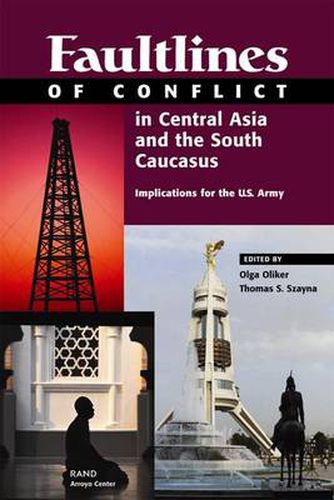Readings Newsletter
Become a Readings Member to make your shopping experience even easier.
Sign in or sign up for free!
You’re not far away from qualifying for FREE standard shipping within Australia
You’ve qualified for FREE standard shipping within Australia
The cart is loading…






Central Asia and the South Caucasus is a region that has witnessed violent clashes both within and between states in recent decades. Moreover, conflict is likely to be a continuing problem over the next 10-15 years. Depending on how the region develops, the form and degree of conflict may or may not grow to involve other states, including the United States. The authors identify and evaluate key faultlines in Central Asia and the South Caucasus and how they affect the like-lihood and possible evolution of armed conflict in these regions. These faultlines include the role of state political and economic weakness; the impact of crime and the drug trade; the effects of ethnic tensions, foreign interests, and influence; and the impact of competition over natural resources. The analysis then examines the ways in which the emergence of conflict could draw the United States into the strife and examines the operational challenges the region poses for possible Army deployments in the 2010-2015 time frame. Although this research was largely completed prior to the 9/11 attacks on the United States, the report has been updated in light of the changed security environment and U.S. military presence on the ground in the Caspian region. The operations in Afghanistan have not altered the faultlines; they are long-term and structural in nature. In fact, U.S. presence on the ground highlights the importance of understanding these faultlines and responding to them effectively.
$9.00 standard shipping within Australia
FREE standard shipping within Australia for orders over $100.00
Express & International shipping calculated at checkout
Central Asia and the South Caucasus is a region that has witnessed violent clashes both within and between states in recent decades. Moreover, conflict is likely to be a continuing problem over the next 10-15 years. Depending on how the region develops, the form and degree of conflict may or may not grow to involve other states, including the United States. The authors identify and evaluate key faultlines in Central Asia and the South Caucasus and how they affect the like-lihood and possible evolution of armed conflict in these regions. These faultlines include the role of state political and economic weakness; the impact of crime and the drug trade; the effects of ethnic tensions, foreign interests, and influence; and the impact of competition over natural resources. The analysis then examines the ways in which the emergence of conflict could draw the United States into the strife and examines the operational challenges the region poses for possible Army deployments in the 2010-2015 time frame. Although this research was largely completed prior to the 9/11 attacks on the United States, the report has been updated in light of the changed security environment and U.S. military presence on the ground in the Caspian region. The operations in Afghanistan have not altered the faultlines; they are long-term and structural in nature. In fact, U.S. presence on the ground highlights the importance of understanding these faultlines and responding to them effectively.